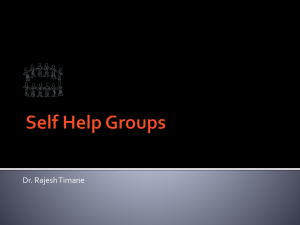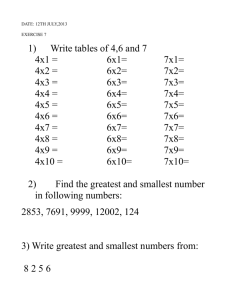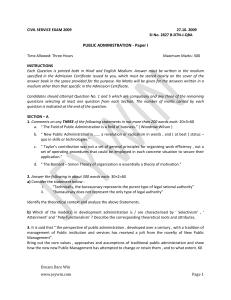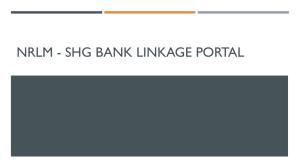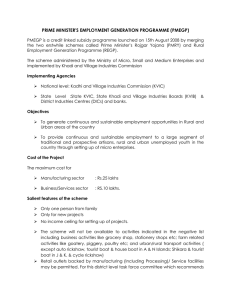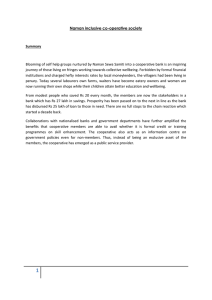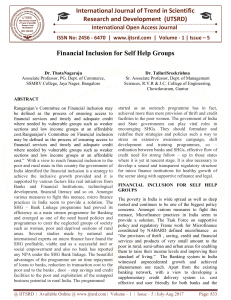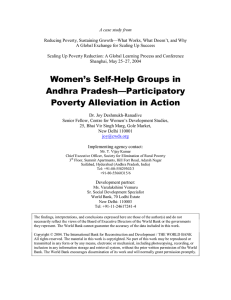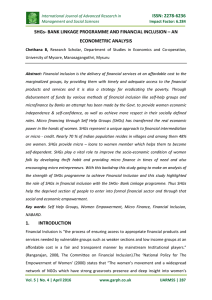SGSY-NRLM-IEC. - Ministry of Rural Development
advertisement
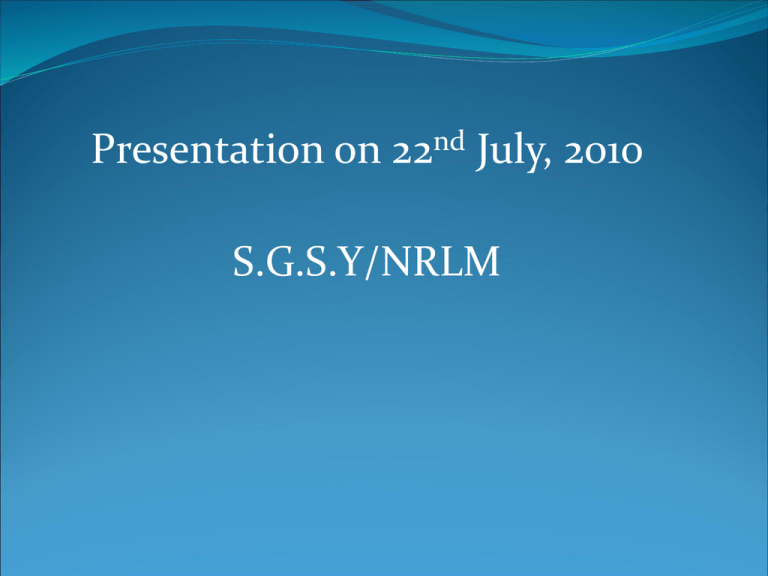
Presentation on 22nd July, 2010 S.G.S.Y/NRLM Main Features of SGSY Formation of Self Help Groups of Rural BPL. SHGs are encouraged to inculcate the habit of thrift. Capacity Building and Skill Development Training of SHGs Provision of credit linkage and subsidy for economic activity Credit linked subsidy is provided in the form of Revolving Fund & Capital Subsidy 20% (25% for NE States) of the allocation for infrastructure & marketing support 15% of total allocation for special projects in the nature of pioneer projects, capable of triggering growth impulses. Reservation of benefits for SC/STs (50%), Women (40%), Minorities (15%) and the disabled (3%) swarozgaris. PERFORMANCE SINCE INCEPTION Deliverables Apr.1999 May’10 2009-10 Total Central Releases (Rs. In crore) Total Investment (Rs. In crore) Total Subsidy Disbursed (Rs. In crore) Total Credit Disbursed (Rs. In crore) Subsidy Credit Ratio Per Capita Investment (in Rs.) No. of SHGs formed (No. in lakhs) Economically Assisted SHGs (No. in lakh) Total Swarozgaris Assisted (No. in lakh) Number of SC/ST Swarozgaris Assisted (No. in lakh) 14100 34000 11000 23000 1.98 24000 (avg) 38 9 140 67.92 (46%) 2230 6410 1960 4450 2.27 31800 3.89 1.36 21 10.75 (51%) Number of Women Swarozgaris (No. in lakh) 84.27(59%) 15.02(72%) Areas of Concerns under SGSY Uneven spread (weak in the poverty pockets in the country) Poor quality of SHGs Inadequate flow of credit-Need of multiple doses of credit High interest rates Inadequate Manpower & lack of professionals to implement the complex and process oriented programme need a strong and huge team of community resource persons Inadequate institutional arrangement for training Fund driven rather than need based Little flexibility to states Most of the SHG enterprises economically unviable Need for up-scaling of placement linked skill development projects New Paradigm…… Where the poor participate as subjects and not as objects of the development process, it is possible to generate growth, human development and equity, not as mutually exclusive trade-offs but as complementary elements in the same process --- Meeting the challenge, Report of the Independent South Asian Commission on Poverty alleviation, 1992 Pro-poor Perspective & Premises for Action... Building organisations of the poor is an essential prerequisite for poverty alleviation. Through these organisations, the poor can save and invest efficiently Empowerment of the poor is the means to poverty eradication. Through empowerment, the poor can also assert the right to resources intended for them and enhance their dignity and self respect Poor women can effectively overcome their double burden through the same process. The need for sensitive support mechanisms to catalyse the process of social mobilisation. --- Meeting the challenge, Report of the Independent South Asian Commission on Poverty alleviation, 1992 Learnings regarding Way out of Poverty Poor have desire & capability to come out of poverty Capabilities are suppressed by variety of obstacles – psychological, economic, social, religious, and political Way out of poverty - Organizing the poor into institutions that they truly own. -Building and nurturing S.H.Gs, enabling them to access credit for coming out the high cost debt trap ( debt swapping) meeting their consumption needs – food, health, education, etc acquiring assets for income generation Flexible Design of NRLM Demand driven strategy Dedicated support organization for NRLM Universal Social mobilization of the rural poor Building institutional platforms for the poor Training and capacity building Developing pro-poor financial sector Access to services and entitlements Linking with markets Risk Mitigation Convergence Gender empowerment Monitoring and transparency Sensitive Support Organization National Rural Livelihoods Mission Sensitive Support Organizational Structure State Level Support Organization Dedicated structure at District and Block Level Demand Driven Approach: Moving away from ‘allocation based approach’ States to prepare specific time bound action plans for poverty elimination through (i) building peoples’ institutions, (ii) livelihood development, and (iii) skill based wage employment Accountability Systems: Institution of systems like social auditing for transparent and accountability Financial Norms under NRLM 5% of allocation for Administrative Cost Rs 10,000 per SHGs for formation Rs. 15,000 RF per SHG Capital Subsidy -Rs. 15,000 per swarozgaris for general & Rs.20,000 for SC/ST & Disabled subject to Max Rs.2.5 lakh per SHG Ensuring availability of credit at 7% rate of interest Rs. 7500 per swarozgari for training & CB Financial Norms under NRLM One time grant assistance of Rs. 10,000 to village/Panchayat level, Rs 20,000 to block level, Rs 100,000 to district level federations 20% of allocation, of which expenditure on innovative projects should not exceed 5%. 7.5% to be retained at the centre for multi-state skill development projects and remaining 7.5% for states to implement state specific special projects for skill development and placement. Strategies/Interventions proposed to be adopted under NRLM Participatory identification approach for the poor CRP Strategy for formation of SHGs and their Capacity building & training Federation to act as financial intermediaries Facilitating SHG Bank linkage Food security fund Health Risk Fund Risk Mitigation Livelihood Interventions in Agriculture (SRI,SWI), animal husbandry, off farm activities Skills upgradation and placement of rural youth Role of PRIs, NYKs, NGOs etc. Identification of the poor Capacity building & training Infrastructural Support Linkages of SHGs with Banks Marketing support Maintenance of record of SHG/VFs/BFs/DFs Monitoring and Social auditing Dissemination of best practices Engaging youths as BC/BFs Role of PRIs, NYKs, NGOs etc. Career counselling for youth Database of youth – skills inventory and aptitudes survey Opportunities for skill training Opportunities for placement RSETIs – self employment Role of Media & IT Mass campaign through Radio, TV and print media by introducing small films, TV serials etc Capacity building & training through Visual Media Development of content Showing best practices through media Promote community radio movement Use of local radio stations – involvement of local communities in content Poverty is an affront to human dignity, and a cost to the economy and the polity. Poverty creates vulnerability, dependence and helplessness. It deprives society of the productive energies of a substantial segment of its population, contributing to instability and social unrest. Thank you
